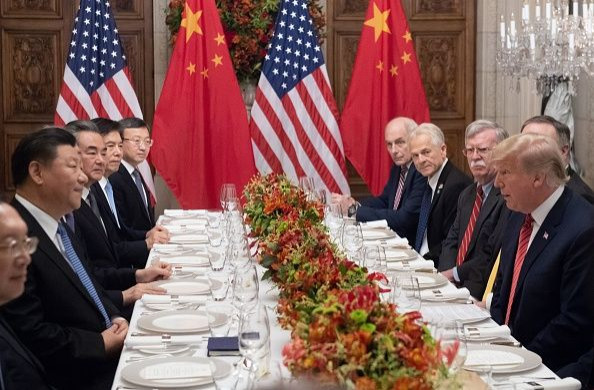US-China Battle For Technological Dominance: Technology Transfer A Benefit Or Burden?

What are the benefits and fallbacks of the United States engaging in technology transfer with China? Michael Davis and David Jacobson, two professors at Southern Methodist University with opposing viewpoints, share their standpoints and rebuttals.
Michael Davis, senior lecturer in economics
In 1405, the charismatic Chinese eunuch Zheng He set sail from Nanjing on a voyage of discovery. Almost 100 years later, an Italian opportunist named Christopher Columbus departed Spain with similar ambitions.
Zheng commanded a fleet of 317 of the most technologically advanced ships the world had ever seen. Columbus’ three tiny ships were, in contrast, crude and primitive. The fact that Chinese ships were vastly superior to those from Europe was not some historical anomaly. All Chinese technology was vastly superior to European technology 600 years ago.
Over the next three centuries, the Chinese squandered their huge technological advantage, sinking into horrific poverty and chaos. We know this happened because too many of China’s corrupt and incompetent bureaucrats sought to protect their technology and cut themselves off from the world.
It seems increasingly likely that the U.S. today is repeating this mistake. An inordinate fear of “forced” technology transfer is leading American policy to close itself off to the world, protecting what we have rather than engaging to see what we might create.
David Jacobson, professor of the practice in business law
The expressed policy of the “Made in China 2025” campaign is to control all business dealings with China’s foreign partners, and to use it to take technology to advance both the country’s own capabilities and damage the ability of other nations to compete.
It is believed that competition keeps competitors keen. When Chinese business entities disregard contractual obligations and ignore intellectual property law, we are not talking about competition. We are talking about conquest.
The State Administration for Science, Technology and Industry for National Defence (SASTIND) is the Chinese Central Committee entity that manages state industries, oversees and prioritizes military interests, and controls civilian businesses. Its guidance to those SOE (state-owned enterprise) companies is not negotiable, as SASTIND never loses sight of the day when technology appropriated from the West may be used to overcome the competitive skills of the original Western collaborator. In business dealings that involve “transferring” technology to Chinese entities, seller beware.
Michael Davis response
Of course, the Central Committee wants to use Western technology to advance their interests. We want to use Chinese resources to advance our interests. That’s called trade and it usually ends well.
Sometimes the Chinese fail at trade. Lawyers call this “ignoring contractual obligations and intellectual property law.” Economists call this “lying.” If the Chinese are lying, then they’ll lose credibility as a reliable trading partner and people won’t want to trade.
For example, if they’re reneging on promises to protect technology that’s transferred as part of a joint venture, American companies will do fewer joint ventures. This will almost certainly hurt the Chinese more than it hurts the Americans.
But what’s going on now is just, well… weird. The Trump Administration is trying to stop bad deals with liars by blocking perfectly sensible deals between honest traders. That’s what tariffs do, they keep people from win-win exchanges.
We don’t need American politicians and technocrats to tell American business people not to trade with liars. And we certainly don’t need those politicians to tell us we can’t trade.
David Jacobson response
The fear of forced technology transfer is that it is uncompensated. According to Chinese law and required contract practice, all technology transfer agreements include Chinese language clauses that require the transferor to agree that should the agreement end, for any reason, the IP in use in China transfers in perpetuity without compensation to the China entity.
While the World Trade Organization forbids forced technology transfer, either directly or indirectly, as a cost of admission to a market, China has crafted exceptions that are the hallmark of their international IP acquisition framework.
I hate government intervention and almost never see it as effective. However, most tech transfer in the world takes place between companies, SOEs and even large private Chinese companies. These companies can have ties or embedded components of state security, intelligence services (military and civilian), foreign ministry, and think tanks tied to the government party that controls the tech of the SOEs. Doing business with an SOE or a large technology-based private Chinese company is doing business with a government, not an independent business.
The terrible trade talk negotiations prove that the U.S. government has neither the intestinal fortitude nor insight to protect domestic companies and technology. The responsibility turns to the business community to figure out ways to protect itself.
Professors Michael Davis, senior lecturer in economics, and David Jacobson, executive director online education and professor of the practice, both teach in the new online MBA program from the Cox School of Business at Southern Methodist University.
© Copyright IBTimes 2024. All rights reserved.











